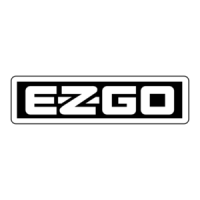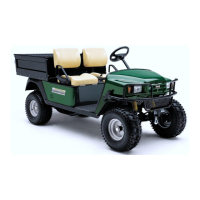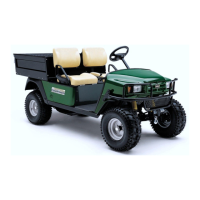B
32
OPERATING PROCEDURES
Read all of SAFETY and this section before attempting any procedure. Pay particular attention to Notices, Cautions, Warnings and Dangers.
Owner’s Manual
Run-In
Avoid full throttle starts and fast acceleration until the engine has reached operating temperature.
All engines use more oil than normal during the first hours of operation. As internal moving parts are run-in, oil use will
gradually decrease until the rate of use stabilizes.
Check the oil level according to the Periodic Service Schedule. Add oil
if the level on the dipstick indicates that oil is in the add oil range.
Do not overfill engine. Too much oil can cause engine to smoke
or cause spark plug fouling.
The oil dipstick and fill cap must be in position before starting the engine. Failure to install the dipstick and fill cap will
cause oil contamination and/or oil discharge into the engine compartment.
Oil dipsticks are unique to this model vehicle. Do not
use a dipstick from another engine.
Dipstick must be installed with the lip towards the front
of the vehicle.
Change the oil according to the Periodic Service
Schedule while the engine is warm.
See the Repair and Service Manual for procedures to
check the oil level and change the oil.
Cold-Start
The use of a choke may be necessary to start a cold
engine.
Press the accelerator 1 inch (2.5 cm) or until the starter
begins to operate. Pull the choke out if needed. Press
the accelerator slowly and push the choke in com-
pletely when the engine is running smoothly.
Do not allow the starter to operate continuously
for more than 10 seconds. Allow 30 seconds
between starting tries. If the vehicle does not
start on the third try, turn the key to the OFF posi-
tion, set the parking brake and find the cause of
the problem.
If the vehicle had been running and the engine does
not start within 10 seconds, use the choke.
Maximum Oil Level
For Hot Engine
Do Not Overfill
Fill Cold Engine
To This Point
Safe
Operating Range
Hot Engine
Add Oil

